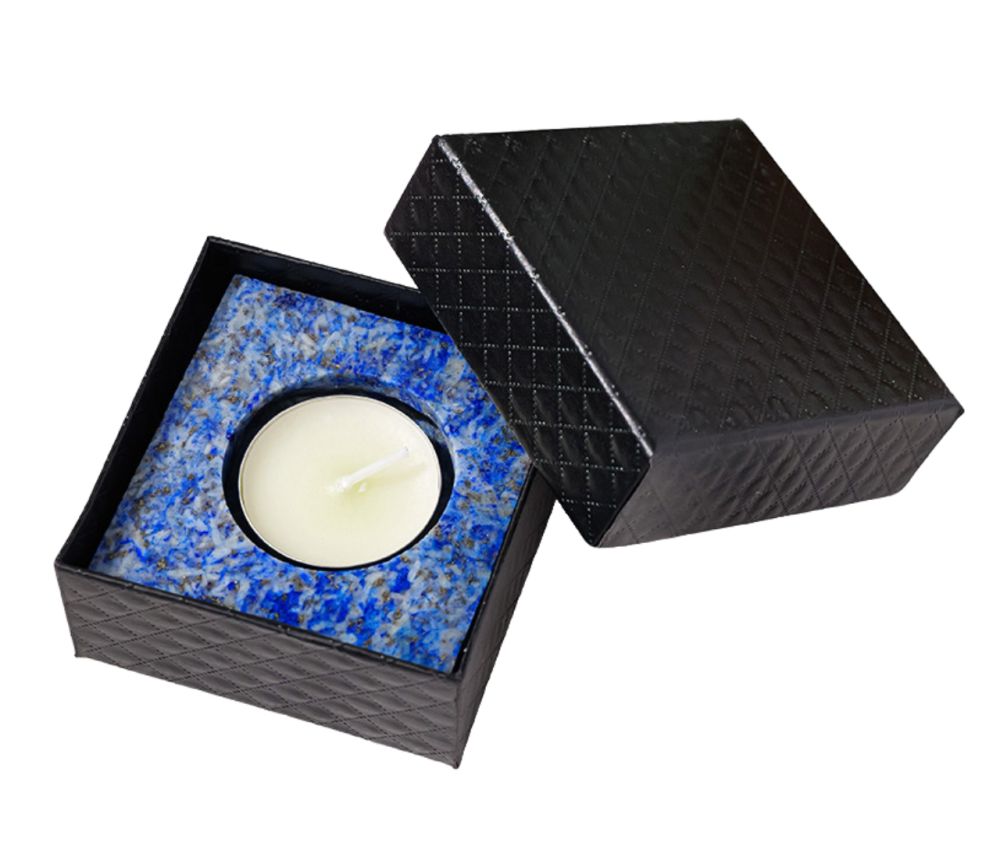We use cookies to make your experience better.
TimmersGems has a new website, existing customers also need to register again.
Lapis Lazuli tealight holder in beautiful gift box. 6.5x6.5x4 cm and for normal tealight of 40 mm.
Fantastic gift set of gemstone candlestick with very beautiful gift box. Made of good quality gemstone and a pleasure to give, and certainly also to receive.
Availability:
In stock
SKU
122358
Lapis lazuli or lapis lazuli is an opaque semi-precious stone with an intense azure blue color. It is not a mineral, but a rock, because it consists of more than one component. It is mainly mined in Afghanistan. The most important component of lapis lazuli is lazurite (25% to 40%), a feldspar substitute with the chemical formula (Na,Ca)8(AlSiO4)6(S,SO4,Cl) Other important components are: calcite (white), sodalite (blue) and pyrite (yellow - metallic shiny). Furthermore, the minerals augite, diopside, enstatite, micas, hauynite, hornblende, geyerite (a sulphur-rich variety of lollingite) and nosean can also occur in lapis lazuli. Lapis lazuli is not particularly hard for a gemstone. On the Mohs scale, the hardness is 5.5, which means that the stone can easily be scratched by harder gemstones. It is therefore not advisable to store jewellery with lapis lazuli together with harder gemstones. Alternative healers attribute spiritual power to lapis lazuli. Lapis lazuli is usually created by contact metamorphism in crystalline marble. Lapis lazuli has been known since ancient times. It was already traded in the city of Ur in 4000 BC. It was one of the trade products of the trade between Sumer, Dilmun and Meluhha. It was also very popular in ancient Egypt. For example, it was used for the death mask of Tutankhamun. There was such a great demand for it throughout the Middle East that imitations were already being made in the 13th century BC. For example, cylinder seals from King Annipi and his father Adummu are known from the city of Sidon, which were given a dark blue colour with the help of cobalt salts. Lapis lazuli was also used in ground form as a blue dye (ultramarine), which was also very popular in Renaissance painting.
| Dimensions | 6,5x6,5x4 cm |
|---|---|
| Country of Manufacture | China |












